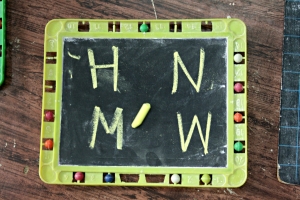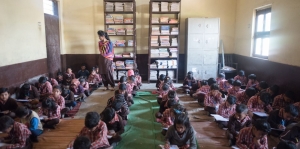In any crisis situation, leaders have the responsibility of balancing seemingly contrasting needs – bracing for a tough time ahead and at the same time spot opportunities to innovate. In this article, we share a few examples from our partners about how nonprofits can be better prepared for the uncertain year ahead by being nimble in their ideas and actions.
The Coronavirus Disease (COVID-19) has been declared a pandemic and has affected more than a million people across the globe. Unfortunately, the numbers are compounding with each passing day and most of us at this stage don’t know how or when it will end. The International Monetary Fund has already said that the global economy has entered into a recession which will be as bad or worse than 2009.
A lot of our partner organizations are using this opportunity to look inward – focus on organizational development given that program delivery has been put on pause/ slowed down.
According to the World Economic Forum, the global humanitarian funding gap was increasing even before COVID-19. Now, with the global economy almost shutting for a month or even more in several countries, the situation will further worsen.Lowering profits among corporates, diversion of funds to COVID-19 response and funding cuts by multi/bilateral agencies will further aggravate the situation for non-profits not just in India but elsewhere too. While COVID-19 has brought focus to public health and our ability to respond to crises of this scale, every other sector is equally affected by this pandemic.
Education has been hit particularly hard. According to a World Bank estimate, a staggering 80% of the world’s enrolled children and youth are forced to be out of school. We at Central Square Foundation (CSF) support several entrepreneurs, nonprofits and other organizations who work towards improving learning outcomes for children in low-income communities in India. Many of these partners are responding to bridge the gaps created by COVID-19 by making required programmatic changes, scenario planning and communicating with key stakeholders. Simultaneously, they have found innovative ways to continue their work by leveraging technology, etc. Over the past two weeks, we have found several valuable practices being followed by our partner organizations. Some of these include:
Quick program iterations to serve immediate community needs: The partner organizations, which are directly in touch with the communities (outside of schools) have made quick tweaks to their program to be able to deliver it even during the lockdown. For instance, physical touchpoints are being replaced with calls and photos on WhatsApp, training and meetings have shifted to video calls or conferencing platforms. Our partner, Saarthi Education, who directly works with parents in low-income communities have quickly geared up for the challenge. In mid-March, they began sharing a daily worksheet on WhatsApp with parents containing one activity for them to do with their child and send back to the Saarthi team. And recently, they’ve opened up this offering to anyone who registers (across the country), expanded their scope to all primary grades and even launched a TikTok channel for children to learn phonics at home!
Using EdTech effectively:
Leveraging power of EdTech is both a real opportunity and a critical need with extended school breaks. For example, we feel that creating content for parents to use at home with their kids in this situation, and disseminating it in some form would be filling a real need. Technology that can bridge the gap between students and teachers would be critical for a situation like this. Our partner organization Chimple’s learning App can be downloaded free-of-cost from Google Play. Another partner, Khan Academy has extended availability of its online resources to students and teachers free of cost during the lockdown period. Language and Learning Foundation, a partner that works on language literacy, has launched a four week online course for government teachers and teacher educators. Realizing the need to bridge this gap, we at CSF have accelerated several of our EdTech efforts including the launch of our Top Parent App.
Scenario planning and prioritizing: This is undoubtedly going to be a tough year financially with the majority of philanthropic funding going towards COVID relief, healthcare and livelihoods. Further, there are also likely to be delays in approvals from governments for next year’s programs and budgets, and instructional time will also probably be lower than usual. Many organizations have already begun thinking about this, and are planning for various different eventualities, creating alternate plans. For instance, our partner Key Education Foundation is working towards a scenario where all teacher training might have to happen digitally over the summer, and is therefore now digitizing the entire module.
Many organizations are already planning for various different eventualities, creating alternate plans.
Communication with funders and other stakeholders: Related to the earlier point, even committed funding might be doubtful, and pipeline funding might get delayed. Several partners are reaching out to all their funders, sharing updates of how they are dealing with the lockdown, their plans for the next few weeks, and getting a sense check of whether the funding is likely to come through. At the same time, many of them are in touch with their key government stakeholders through phone and WhatsApp and keeping them constantly updated as well. Our partner, Madhi Foundation, for instance, has already proactively contacted all their funders, shared their revised plans for the year, and has locked in funding for the upcoming year.
Connect through social media: Some partner organizations have taken to social media and are using this opportunity to share how they are learning to deal with this new normal, and are also extrapolating from their work to share some tips to remain productive and healthy. Learning Curve Life Skills Foundation shares one practical easy-to-use resource/ activity and one video for emotional well-being on their blog for the whole family to try and do together.
Looking inward:
And finally, a lot of our partner organizations are using this opportunity to look inward – focus on organizational development given that program delivery has been put on pause/ slowed down. Some of these activities include strategy stepbacks, upgrading communications and fundraising collateral, improving data systems, defining better performance management metrics etc. Our newest grant partner, Organization for Early Literacy Promotion (OELP), for instance, has used the program downtime to initiate online capacity building programs for all their field staff.
In these unprecedented times, it is our collective responsibility to improve our capability to respond to such crises and ensure that children continue to learn while they are at their homes. We continue to remain committed to support our partners in navigating through this phase and deliver impact at scale. Let’s ensure that we increase the access to learning resources to as many kids as possible while gearing up for a challenging financial period ahead.



